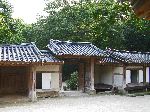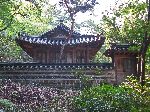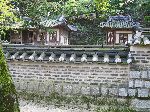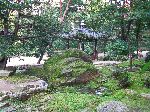Ibike Korea People-to-People Program
 Photo essay: Changdeokgung & the Secret Garden
Walking Tour
Photo essay: Changdeokgung & the Secret Garden
Walking Tour
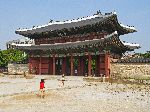
Donhwanmun (gate), is the oldest palace gate among those remaining in Korea. "Donhwa" means to "teach and influence the people."
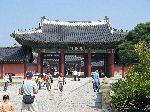
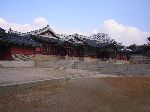
Beyond the bridge is Jinseonmun (gate). There are three lanes crossing the bridge and passing through the gate; the right path is for civil administration, the center walkway is for the King, left path is for military
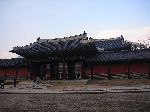
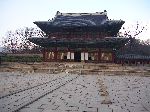 Injeongjeonmun
(gate) leads to Injeongjeon . Both date back to 1405. Injeongjeon is
considered the greatest building in the palace. It was used for official
ceremonies, such as celebrations by royal subjects and receptions for foreign
envoys.
Injeongjeonmun
(gate) leads to Injeongjeon . Both date back to 1405. Injeongjeon is
considered the greatest building in the palace. It was used for official
ceremonies, such as celebrations by royal subjects and receptions for foreign
envoys.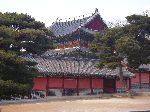
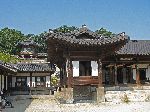
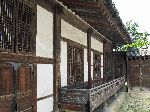
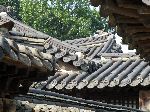
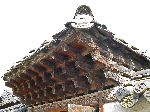
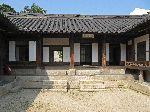
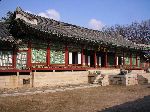
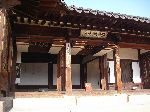 Changdeokgung has many of the elements of Gyeongbokgung, the
big palace, but on a more intimate scale and a much larger garden / forest. With
its large variety of shapes, textures, colors, lines, angles, design and natural
settings, it
is one of the most photogenic palaces in Seoul.
Changdeokgung has many of the elements of Gyeongbokgung, the
big palace, but on a more intimate scale and a much larger garden / forest. With
its large variety of shapes, textures, colors, lines, angles, design and natural
settings, it
is one of the most photogenic palaces in Seoul.Most of this group of photos are from around the various living quarters.
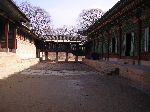
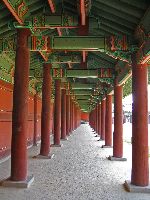
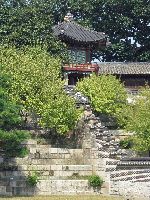
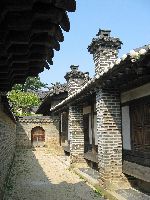
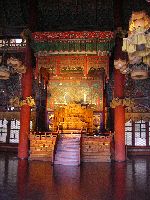
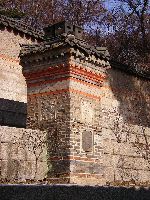
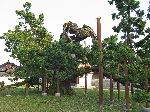
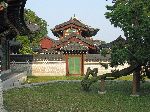
Huwon, the Secret Garden
Secret garden has undergone a series of name changes over its history. Because it was an extremely private space for the king it has been called ‘Geumwon’ (Forbidden garden) because even high officials could not dare to come in without king’s permission. Another name of the garden used to be ‘Naewon’ (Inner garden). Today Koreans often call it ‘Biwon’ (Secret garden) which derived from the office of same name in the late 19th century . Thhe name most frequently used through Joseon dynasty period was ‘Huwon’. It is a UNESCO World Cultural Heritage Site.
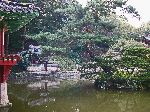
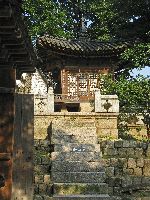 The
northern 60 percent of Changdeokgung Palace is Huwon, the Secret Garden.
Until the new millennium it was mostly closed to the public. The public is
now allowed to tour the Secret Garden on escorted tours up to 100 people.
The
northern 60 percent of Changdeokgung Palace is Huwon, the Secret Garden.
Until the new millennium it was mostly closed to the public. The public is
now allowed to tour the Secret Garden on escorted tours up to 100 people.Presumably this is done to minimize the human impact on the garden, but in a group of 100 technology equipped people you loose the calm, tranquility and nature of the experience. Going through the garden the people had a tendency to clamber around points of interest so it was contemplate a landscape without a couple dozen people scattering energy in it. All of the photos here are essentially a fraud because the palace was packed and the tour was full so I had to work hard to see the palace and garden from the people.
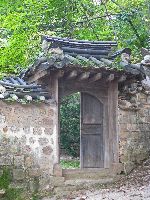 Huwon
was exclusively for the leisure of members of the royal family. The
garden was first constructed during the reign of King Taejong, who ruled from
1400 to 1418. Its location allowed access from either Changdeokgung Palace or
the adjacent Changgyeonggung Palace. It was here where royalty rested,
contemplated life, wrote poems, and held banquets.
Huwon
was exclusively for the leisure of members of the royal family. The
garden was first constructed during the reign of King Taejong, who ruled from
1400 to 1418. Its location allowed access from either Changdeokgung Palace or
the adjacent Changgyeonggung Palace. It was here where royalty rested,
contemplated life, wrote poems, and held banquets.
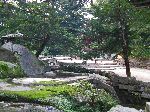
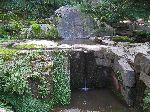 Generally
the design of the garden flows naturally with the surrounding nature. The
exquisite design is adapted to the topography, geography, and ridges of Mt.
Bugaksan. Artificial landscaping is minimal and left untouched to human hands as
much as possible.
Generally
the design of the garden flows naturally with the surrounding nature. The
exquisite design is adapted to the topography, geography, and ridges of Mt.
Bugaksan. Artificial landscaping is minimal and left untouched to human hands as
much as possible.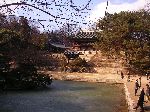
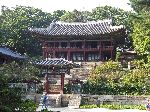
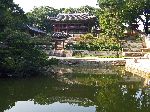 Buyongji
(pond) is created to mimic earth, the square pond, and the universe,
the round island. The building on the hill was used to store the royal archives.
Buyongji
(pond) is created to mimic earth, the square pond, and the universe,
the round island. The building on the hill was used to store the royal archives.Above Buyongji is Juhamnu (hall) and Eosumun (gate), built in 1776. The two-story pavilion served as a library and royal archive, Gyujanggak, (first floor) and reading room second floor) during the reign of King Jeongjo. Gyujanggak was not only used as a library but also as a political research institute for the king as he worked on his reform ideas.
The name Eosumun refers to the fact that a fish cannot live outside of water. This was a reminder to King Jeongjo that he as a ruler must consider and respect the people he rules.
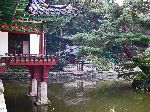
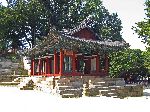 The
pavilion with two pillars in the pond is Buyongjeon (left). It is unique,
in that instead of a long central roof ridge, its roof structure extends out in
four directions forming a cross.
The
pavilion with two pillars in the pond is Buyongjeon (left). It is unique,
in that instead of a long central roof ridge, its roof structure extends out in
four directions forming a cross.On the opposite side of to Buyongji is another pavilion (right), which was used for reading and contemplation.
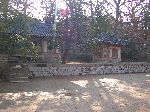
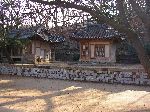
Uiduhap Pavilion was built by Crown Prince Hyomyeong as a place of study, reading, and contemplation. Hyomyeong was the first son of King Sunjo. Unlike other royal structures, the architecture is conservative and not decorated with vivid paintwork. It is one of the most modest buildings at Changdeokgung Palace.
Along with Aeryeonjeong Pavilion, these are the only buildings in the palace that face north.
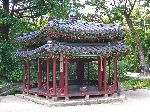
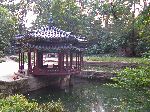
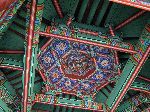 Four
pavilions are located around two pond in this area: The unique pavilion with the
double-layer roof is Jondeokjeong (1644). There is a painting of blue and
yellow dragons on the ceiling. A tablet hangs on the north side of the
pavilion, with King Jeongjo's handwriting, reads “All streams of the world have
moons reflected on them, but there is only one moon in the sky. The moon in the
sky is me, the king, and the streams are you, my subjects.” This plaque
reiterates that King Sejong desired full royal authority of his people.
Four
pavilions are located around two pond in this area: The unique pavilion with the
double-layer roof is Jondeokjeong (1644). There is a painting of blue and
yellow dragons on the ceiling. A tablet hangs on the north side of the
pavilion, with King Jeongjo's handwriting, reads “All streams of the world have
moons reflected on them, but there is only one moon in the sky. The moon in the
sky is me, the king, and the streams are you, my subjects.” This plaque
reiterates that King Sejong desired full royal authority of his people.
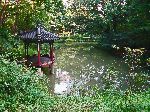
The longer pavilion is Pyeonmusa. "Pyeomu" means to "beware of and amend folly." The pavilion with a roof shaped like the ribs of a fan is Gwallamjeong (left). On the facing hill is Seungjaejeong. "Seungjae" means outstanding scenery." Both of these pavilion are believed to have been built in the 1800's.
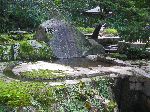
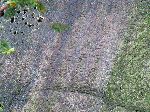 The Ongnyucheon
(stream) area was a garden within the garden, and one of the most beautiful at
that. It is where the king would sometimes
hold parties. Wine cups would be floated down the stream, and then the recipient
would have to drink the wine and compose an impromptu poem.
The Ongnyucheon
(stream) area was a garden within the garden, and one of the most beautiful at
that. It is where the king would sometimes
hold parties. Wine cups would be floated down the stream, and then the recipient
would have to drink the wine and compose an impromptu poem.Soyoam is a rock (tall rock on the left and close up on the right) with the name of OngnyuCheon carved into it by King Injo (reigned 1623-1649). Also carved into the rock is a poem composed by King Sukjong (reigned 1675-1720).
Around the stream are located small open pavilions allowing the viewer to enjoy the garden from any direction. Taegeukjeong pavilion symbolizes the state of perfect harmony, with yin and yang in balance. Cheonguijeong is the only existing thatched pavilion left in the grounds of Changdeokgung. In front of it is a small rice field, the king would farm rice to aid his understanding of the hard work of farmers and show his solidarity with the farmers. The dried rice plants would be used to thatch Cheonguijeong.
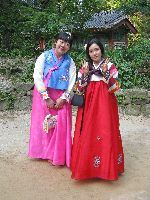
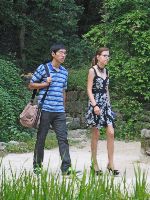 The
days of royalty in Huwon are long past, so we are adopting these well dressed
visitors (left) as royal representatives or princesses of the day.
The
days of royalty in Huwon are long past, so we are adopting these well dressed
visitors (left) as royal representatives or princesses of the day.A full experience in Huwon requires a long walk so comfortable walking shoes are recommended. You don't have to walk fast, in fact a slow stroll is preferable for absorbing as much of the quality, temperament, spirit, mood and personality of the garden as possible. It changes through the seasons.
 Please
contact us if you would like to be added to
Ibike's mailing list or have questions, comments, corrections or criticism. (Also, please let us know how you learned about us and
found this site.) Privacy policy.
Please
contact us if you would like to be added to
Ibike's mailing list or have questions, comments, corrections or criticism. (Also, please let us know how you learned about us and
found this site.) Privacy policy.
![]() IBF Homepage
IBF Homepage ![]() Ibike Programs
Ibike Programs
![]() Ibike Schedule
Ibike Schedule
![]() Search
Search
